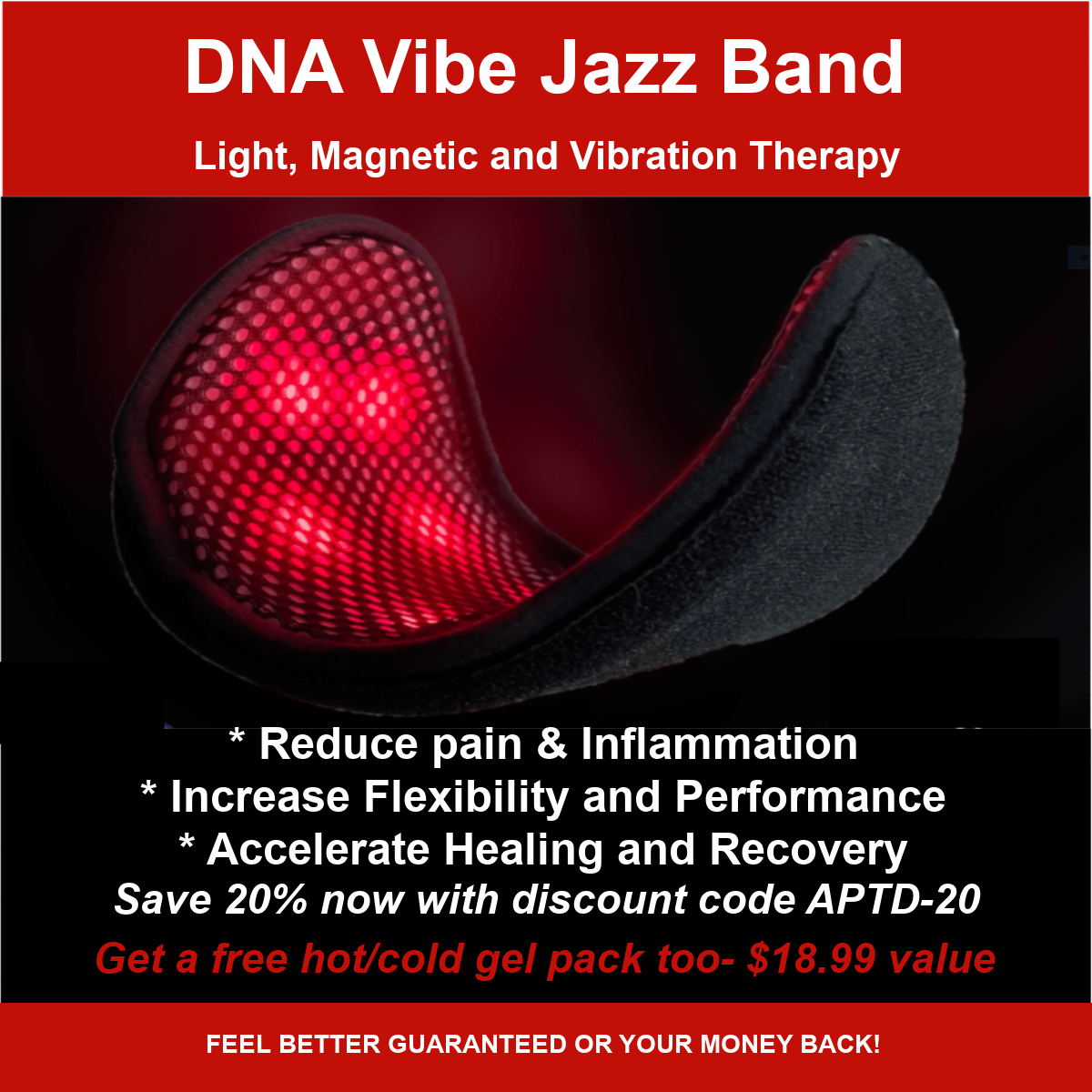
Our bodies are complex machines, running on a series of intricate systems working together to maintain health and function. Among these, the body’s electrical systems play a crucial role in regulating essential functions of the brain, peripheral nervous system, heart and musculoskeletal systems and maintaining overall well-being. This blog aims to explain the importance of these electrical systems and how interventions targeting these systems can be utilized for pain relief and overall health improvement.
The Brain: Command Center of the Body
The brain is often referred to as the command center of the body, and for good reason. It is responsible for interpreting sensory information, controlling movement, and managing cognitive functions such as thinking, memory, and decision-making. At the core of the brain’s operation is its electrical system which consists of billions of neurons that communicate through electrical impulses. Neurons are specialized cells that transmit information throughout the brain and body. Each neuron generates electrical signals, known as action potentials, which travel along its axon to communicate with other neurons at synapses. This electrical activity is essential for brain functions, from simple reflexes to complex thought processes.
Brain Waves and Their Significance
The brain’s electrical activity can be measured using electroencephalography (EEG), which records brain waves. These brain waves vary in frequency and amplitude and are associated with different states of consciousness. For example, alpha waves are linked to relaxed, calm states, while beta waves are associated with active thinking and concentration. Monitoring brain waves can provide valuable insights into brain health and help diagnose conditions such as epilepsy and sleep disorders.
The Heart: An Electrical Pump
The heart is another vital organ that relies heavily on its electrical system. Its primary function is to pump blood throughout the body, delivering oxygen and nutrients to tissues and removing waste products. The heart’s electrical system ensures that it beats in a coordinated and rhythmic manner, which is essential for efficient blood circulation. The heart’s electrical system is composed of specialized cells that generate and transmit electrical impulses. The sinoatrial (SA) node, often referred to as the natural pacemaker, initiates the electrical signal that causes the heart to beat. This signal then travels through the atria to the atrioventricular (AV) node, and subsequently through the bundle of His and Purkinje fibers, causing the ventricles to contract. This coordinated electrical activity ensures that the heart pumps blood effectively.
Electrocardiogram (ECG) and Heart Health
An electrocardiogram (ECG) is a test that measures the electrical activity of the heart. It can provide important information about heart rate, rhythm, and the presence of any abnormalities. By analyzing ECG patterns, healthcare providers can diagnose conditions such as arrhythmias, heart attacks, and other cardiac disorders. Regular monitoring of heart health through ECG can help prevent serious complications and improve overall cardiovascular health.
The Nervous System: A Network of Electrical Pathways
The nervous system, which includes the brain, spinal cord, and peripheral nerves, is the body’s communication network. It controls and coordinates all bodily functions by transmitting electrical signals between different parts of the body. The nervous system is divided into two main components: the central nervous system (CNS) and the peripheral nervous system (PNS).
Central Nervous System (CNS)
The CNS, consisting of the brain and spinal cord, serves as the control center for the body. It processes sensory information, generates responses, and coordinates activities. The brain’s electrical activity, as mentioned earlier, is crucial for cognitive functions and overall brain health. The spinal cord acts as a conduit for electrical signals traveling between the brain and the rest of the body.
Peripheral Nervous System (PNS)
The PNS includes all the nerves outside the CNS and is further divided into the somatic and autonomic nervous systems. The somatic nervous system controls voluntary movements, such as walking and talking, by transmitting electrical signals from the brain to the muscles. The autonomic nervous system regulates involuntary functions, such as heart rate, digestion, and respiration, through its sympathetic and parasympathetic branches. Nerve impulses, or action potentials, are the electrical signals that travel along neurons. When a nerve impulse reaches the end of a neuron, it triggers the release of neurotransmitters, which cross the synaptic gap to transmit the signal to the next neuron. This process of synaptic transmission is essential for communication within the nervous system and between the nervous system and other parts of the body.
The Role of Electrical Activity in Muscle Health
Electrical activity plays a fundamental role in muscle health, encompassing muscle function, growth, repair, and overall performance. The human body relies on electrical signals to control muscle contractions and coordinate movements, which are essential for daily activities, physical fitness, and overall well-being. Here’s an in-depth look at how it impacts muscle health and the various therapeutic applications that leverage this mechanism.
Role in Muscle Contraction
- Neuromuscular Junction
- Signal Transmission: Muscle contractions begin with the transmission of electrical signals from the brain through motor neurons. These signals travel to the neuromuscular junction, where the motor neuron meets the muscle fiber.
- Acetylcholine Release: The arrival of an electrical impulse at the neuromuscular junction triggers the release of the neurotransmitter acetylcholine, which binds to receptors on the muscle fiber, initiating a cascade of events that lead to muscle contraction.
- Signal Transmission: Muscle contractions begin with the transmission of electrical signals from the brain through motor neurons. These signals travel to the neuromuscular junction, where the motor neuron meets the muscle fiber.
- Action Potentials in Muscle Fibers
- Depolarization: Acetylcholine binds to the muscle cell membrane, causing it to depolarize. This is essential for generating an electrical signal, or action potential, that moves along the muscle fiber.
- Calcium Release: The action potential travels into the muscle fiber's interior through T-tubules, leading to the release of calcium ions from the sarcoplasmic reticulum. This step is essential for activating the muscle fibers.
- Muscle Contraction: Calcium ions bind to proteins within the muscle fiber, allowing actin and myosin filaments to interact. This interaction is essential for the muscle to contract and produce movement.
Electrical Activity and Muscle Health
- Muscle Growth and Strength
- Neuromuscular Activation: Regular physical activity and resistance training enhance neuromuscular activation, improving the efficiency and strength of muscle contractions.
- Hypertrophy: Consistent electrical stimulation through voluntary exercise or therapies like NMES promotes muscle hypertrophy (growth), increasing muscle mass and strength.
- Neuromuscular Activation: Regular physical activity and resistance training enhance neuromuscular activation, improving the efficiency and strength of muscle contractions.
- Muscle Repair and Regeneration
- Cellular Repair: Electrical activity stimulates cellular processes that are crucial for muscle repair and regeneration. This includes the activation of satellite cells, which are involved in muscle repair and growth.
- Blood Flow and Nutrient Delivery: Electrical stimulation enhances blood flow to muscles, ensuring the delivery of oxygen and essential nutrients necessary for recovery and growth.
- Cellular Repair: Electrical activity stimulates cellular processes that are crucial for muscle repair and regeneration. This includes the activation of satellite cells, which are involved in muscle repair and growth.
- Muscle Endurance and Performance
- Increased Endurance: Regular activation of muscle fibers through exercise or electrical stimulation improves muscle endurance by enhancing the muscle's ability to sustain prolonged activity.
- Coordination and Efficiency: Proper neuromuscular function ensures coordinated and efficient muscle movements, contributing to better overall physical performance.
- Increased Endurance: Regular activation of muscle fibers through exercise or electrical stimulation improves muscle endurance by enhancing the muscle's ability to sustain prolonged activity.
The Interconnectedness of Electrical Systems
The brain, heart, and nervous system do not operate in isolation; they are interconnected and work together to maintain equilibrium and overall health. For example, the brain regulates heart rate and blood pressure through the autonomic nervous system. Stress, which originates in the brain, can affect heart function by increasing heart rate and blood pressure. Conversely, cardiovascular problems can impact brain health, as the brain relies on a steady supply of oxygen-rich blood to function properly.
The Importance of Maintaining Electrical Health
Given the critical role of the electrical systems in the body, it is essential to maintain their health to ensure overall well-being. Lifestyle choices that enhance the body’s electrical system are the same as those that promote overall well-being, as follows:
1. Healthy Diet
A balanced diet rich in nutrients supports brain function and cardiovascular health. Foods high in omega-3 fatty acids, antioxidants, and vitamins can help protect neurons and improve heart health. Avoiding excessive intake of processed foods, sugars, and unhealthy fats is also important.
2. Regular Exercise
Physical activity promotes cardiovascular health, enhances blood flow to the brain, and supports the function of the nervous system. Regular exercise can also reduce the risk of developing chronic conditions such as hypertension, diabetes, and obesity, which can negatively impact the body’s electrical systems.
3. Adequate Sleep
Sleep is essential for brain health, as it allows the brain to rest, repair, and consolidate memories. Poor sleep quality can affect cognitive function and increase the risk of developing neurological disorders. Establishing a regular sleep routine and creating a conducive sleep environment can improve sleep quality.
4. Stress Management
Chronic stress can have detrimental effects on the brain, heart, musculoskeletal and nervous systems. Techniques such as mindfulness, meditation, deep breathing exercises, and engaging in hobbies can help manage stress and promote relaxation.
5. Avoiding Harmful Substances
Substances such as tobacco, alcohol, and recreational drugs can harm the brain, heart, and nervous system. Avoiding these substances can significantly reduce the risk of developing related health problems.
Natural Pain Relief Treatments that Affect the Body’s Electrical Activity
Various medical and therapeutic devices are designed to support and optimize the body’s electrical system. Here are some treatments that can be utilized:
Neuromuscular Electrical Stimulation (NMES)
Neuromuscular Electrical Stimulation (NMES) devices are specialized tools designed to improve muscle strength, function, and rehabilitation through the application of electrical impulses. These devices stimulate muscle contractions by delivering electrical currents through electrodes placed on the skin over targeted muscle groups. These devices are widely used in various medical and therapeutic settings to aid in muscle recovery and enhance neuromuscular performance.
Purpose:
- Muscle Stimulation and Rehabilitation: NMES devices are used to evoke muscle contractions, helping to strengthen muscles, improve endurance, and facilitate recovery in patients with muscle weakness or neuromuscular impairments.
Applications:
- Physical Therapy and Rehabilitation
- Post-Surgery Recovery: NMES devices are often used to prevent muscle atrophy and promote muscle re-education following surgeries such as knee arthroscopy, hip replacement, or ligament repairs.
- Stroke Rehabilitation: They aid in the recovery of muscle function and mobility in stroke patients by stimulating paralyzed or weakened muscles.
- Orthopedic Rehabilitation: NMES is used to treat musculoskeletal injuries, improve joint stability, and enhance recovery from fractures.
- Post-Surgery Recovery: NMES devices are often used to prevent muscle atrophy and promote muscle re-education following surgeries such as knee arthroscopy, hip replacement, or ligament repairs.
- Sports Medicine and Athletic Training
- Strength Training: Athletes use NMES to enhance muscle strength and performance, complementing their regular training routines.
- Injury Prevention: Regular use of NMES can help prevent injuries by maintaining muscle strength and balance, particularly in high-risk areas like the knees and ankles.
- Recovery and Muscle Soreness Reduction: NMES can speed up recovery times and reduce muscle soreness after intense workouts or competitions.
- Strength Training: Athletes use NMES to enhance muscle strength and performance, complementing their regular training routines.
- Chronic Conditions and Pain Management
- Chronic Pain: NMES devices can be used to alleviate chronic pain conditions such as lower back pain, arthritis, and fibromyalgia by stimulating endorphin release and improving blood circulation.
- Peripheral Neuropathy: Patients with conditions like diabetic neuropathy can benefit from NMES as it helps improve muscle strength and reduce pain and discomfort associated with nerve damage.
- Chronic Pain: NMES devices can be used to alleviate chronic pain conditions such as lower back pain, arthritis, and fibromyalgia by stimulating endorphin release and improving blood circulation.
- Functional Improvement
- Improving Mobility: NMES can assist individuals with neuromuscular disorders or spinal cord injuries in improving their mobility and performing daily activities.
- Enhancing Blood Flow: The muscle contractions induced by NMES improve blood flow and circulation, which can be beneficial for individuals with circulatory issues or those confined to prolonged bed rest.
- Improving Mobility: NMES can assist individuals with neuromuscular disorders or spinal cord injuries in improving their mobility and performing daily activities.
Benefits of NMES
- Non-Invasive: They provide a non-invasive treatment option for muscle strengthening and rehabilitation.
- Targeted Therapy: They allow for precise targeting of specific muscle groups, making them effective for localized treatment.
- Enhanced Muscle Activation: NMES can activate muscles more intensely and consistently compared to voluntary contractions alone, leading to better muscle development.
- Convenience: Many NMES devices are portable and easy to use, allowing patients to perform therapy sessions at home or on the go.
Key Features of NMES Devices
- Adjustable Settings: Most NMES devices offer adjustable parameters such as intensity, frequency, and pulse duration, allowing customization based on individual needs and treatment goals.
- Multiple Channels: Advanced devices come with multiple channels, enabling simultaneous stimulation of different muscle groups.
- User-Friendly Interfaces: Modern devices are designed with user-friendly interfaces and preset programs to facilitate ease of use for both patients and healthcare providers.
Neuromuscular Electrical Stimulation (NMES) devices are valuable tools in the realm of physical therapy, sports medicine, and rehabilitation. They offer significant benefits for muscle strengthening, pain management, and functional improvement across various patient populations. Whether recovering from surgery, managing a chronic condition, or enhancing athletic performance and provide a versatile and effective approach to improving the electrical activity in the body and promoting overall neuromuscular health.
Frequency Specific Microcurrent (FSM)
Frequency Specific Microcurrent (FSM) devices are advanced therapeutic tools used to treat pain and promote healing by delivering extremely low-level electrical currents to targeted areas of the body. These currents are typically in the microampere range, which is much lower than those used in other forms of electrical stimulation therapy such as TENS or NMES. The use of specific frequencies is believed to enhance the effectiveness of the treatment for various conditions. These microcurrents mimic the body's natural electrical signals, enhancing ATP (adenosine triphosphate) production, which is crucial for cellular energy and repair. The specific frequencies are believed to resonate with different tissues and conditions, optimizing the therapeutic effects. For example:
- Reducing Inflammation: Specific frequencies can target inflammatory processes, helping to decrease swelling and pain.
- Promoting Tissue Repair: Frequencies aimed at cellular repair can stimulate fibroblasts and other cells involved in tissue regeneration, speeding up the healing process.
- Modulating Pain: Certain frequencies can interfere with pain signals, providing relief from both acute and chronic pain.
Applications:
- Pain Management
- Chronic Pain: FSM is effective in managing chronic pain conditions such as fibromyalgia, myofascial pain syndrome, and neuropathic pain.
- Acute Pain: It is also used for acute injuries like sprains, strains, and post-surgical pain, helping to reduce inflammation and accelerate healing.
- Chronic Pain: FSM is effective in managing chronic pain conditions such as fibromyalgia, myofascial pain syndrome, and neuropathic pain.
- Inflammation Reduction
- Arthritis: FSM can help reduce the inflammation and pain associated with arthritis, improving joint function and quality of life.
- Tendonitis and Bursitis: By reducing inflammation in tendons and bursae, FSM aids in the recovery from tendonitis and bursitis.
- Arthritis: FSM can help reduce the inflammation and pain associated with arthritis, improving joint function and quality of life.
- Injury Recovery
- Soft Tissue Injuries: FSM is commonly used for treating soft tissue injuries such as muscle tears, ligament sprains, and contusions.
- Bone Healing: It may also assist in the healing of fractures by stimulating cellular repair processes.
- Soft Tissue Injuries: FSM is commonly used for treating soft tissue injuries such as muscle tears, ligament sprains, and contusions.
- Neurological Conditions
- Nerve Pain: FSM is used to alleviate pain from conditions such as sciatica, carpal tunnel syndrome, and post-herpetic neuralgia.
- Multiple Sclerosis and Parkinson’s Disease: Some patients with neurological conditions report symptom relief and improved function with FSM therapy.
- Nerve Pain: FSM is used to alleviate pain from conditions such as sciatica, carpal tunnel syndrome, and post-herpetic neuralgia.
- Enhancing Cellular Function
- Skin Health: FSM can be used to improve skin health and reduce the appearance of scars by enhancing cellular repair and regeneration.
- Chronic Fatigue Syndrome: Patients with chronic fatigue syndrome may experience reduced symptoms and increased energy levels through FSM therapy.
- Skin Health: FSM can be used to improve skin health and reduce the appearance of scars by enhancing cellular repair and regeneration.
Benefits of FSM Devices
- Low-Intensity Treatment: FSM uses microcurrents, which are similar to the body’s natural electrical currents, making it a gentle and non-invasive treatment option.
- Specificity: The ability to use specific frequencies tailored to different tissues and conditions enhances the effectiveness of the treatment.
- Reduced Side Effects: FSM typically has fewer side effects compared to medications and more invasive treatments.
- Accelerated Healing: By promoting cellular repair and reducing inflammation, FSM can accelerate the healing process.
Key Features of FSM Devices
- Frequency Selection: FSM devices allow practitioners to select specific frequencies that match the tissues and conditions being treated.
- Customizable Protocols: Many devices come with pre-set protocols for common conditions, as well as the ability to customize settings for individual patient needs.
- Portability: FSM devices are often portable, allowing for convenient use in clinical settings or at home.
Frequency Specific Microcurrent (FSM) devices offer a versatile and effective approach to pain management and tissue healing. By delivering low-level electrical currents at specific frequencies, these devices can target a wide range of conditions with minimal side effects. FSM therapy is a valuable tool for healthcare providers and patients seeking non-invasive, effective treatment options for pain relief, inflammation reduction, and enhanced healing. Whether used in clinical settings or at home, FSM devices represent a significant advancement in the field of electrotherapy.
Calmare Scrambler Therapy: An Innovative Approach to Pain Management
Calmare Scrambler Therapy, also known simply as Scrambler Therapy, is an advanced pain treatment technology that offers relief from chronic and neuropathic pain. This non-invasive therapy uses electrical stimulation to "scramble" pain signals, providing an alternative to traditional pain management methods.
Purpose:
- Pain Modulation: Calmare Scrambler Therapy is designed to alleviate chronic and neuropathic pain by disrupting the transmission of pain signals to the brain.
Applications:
- Chronic Pain Conditions
- Neuropathic Pain: Conditions such as diabetic neuropathy, postherpetic neuralgia (shingles pain), and chemotherapy-induced peripheral neuropathy (CIPN) are commonly treated with Scrambler Therapy.
- Complex Regional Pain Syndrome (CRPS): This therapy can provide significant relief for patients suffering from CRPS, a condition characterized by severe, persistent pain.
- Neuropathic Pain: Conditions such as diabetic neuropathy, postherpetic neuralgia (shingles pain), and chemotherapy-induced peripheral neuropathy (CIPN) are commonly treated with Scrambler Therapy.
- Cancer-Related Pain
- Chemotherapy-Induced Peripheral Neuropathy (CIPN): Scrambler Therapy is particularly effective in managing CIPN, a common and painful side effect of cancer treatment.
- Post-Surgical Pain: Patients experiencing pain after cancer surgery may find relief through this therapy.
- Chemotherapy-Induced Peripheral Neuropathy (CIPN): Scrambler Therapy is particularly effective in managing CIPN, a common and painful side effect of cancer treatment.
- Post-Surgical and Post-Traumatic Pain
- Post-Amputation Pain: Scrambler Therapy can help alleviate phantom limb pain and other post-amputation pain syndromes.
- Post-Surgical Pain: It is effective in treating pain following various surgical procedures, promoting faster recovery and improved quality of life.
- Post-Amputation Pain: Scrambler Therapy can help alleviate phantom limb pain and other post-amputation pain syndromes.
- Fibromyalgia
- Widespread Pain: Patients with fibromyalgia, a condition characterized by widespread musculoskeletal pain, can benefit from Scrambler Therapy, which helps reduce the intensity of pain.
- Widespread Pain: Patients with fibromyalgia, a condition characterized by widespread musculoskeletal pain, can benefit from Scrambler Therapy, which helps reduce the intensity of pain.
Mechanism of Action
Calmare Scrambler Therapy works by using electrical stimulation to interfere with the transmission of pain signals. Here’s how it operates:
- Electrical Impulses: The therapy involves the application of low-frequency electrical impulses via electrodes placed on the skin near the area of pain.
- Signal Scrambling: These electrical impulses "scramble" the pain signals, replacing them with non-painful signals that the brain interprets as normal.
- Neuromodulation: By altering the way pain signals are transmitted to the brain, Scrambler Therapy effectively modulates pain perception, providing relief without the need for drugs or invasive procedures.
Benefits of Calmare Scrambler Therapy
- Non-Invasive: The therapy does not involve surgery or invasive procedures, making it a safe option for many patients.
- Drug-Free: Scrambler Therapy offers pain relief without the use of medications, reducing the risk of drug-related side effects and dependency.
- Immediate Relief: Many patients experience significant pain relief after just a few sessions, with effects lasting for extended periods.
- Broad Applicability: It can be used to treat a wide range of chronic and neuropathic pain conditions.
Treatment Process
- Initial Assessment
- Consultation: The therapy begins with a thorough consultation to determine if Scrambler Therapy is suitable for the patient’s specific pain condition.
- Customization: Treatment parameters are customized based on the patient’s pain location, intensity, and type.
- Consultation: The therapy begins with a thorough consultation to determine if Scrambler Therapy is suitable for the patient’s specific pain condition.
- Application
- Electrode Placement: Electrodes are strategically placed on the skin near the pain area.
- Session Duration: Each therapy session typically lasts about 30 to 60 minutes.
- Electrode Placement: Electrodes are strategically placed on the skin near the pain area.
- Course of Treatment
- Multiple Sessions: Patients usually undergo a series of treatments over several days or weeks to achieve optimal pain relief.
- Follow-Up: Regular follow-up sessions may be recommended to maintain pain relief.
- Multiple Sessions: Patients usually undergo a series of treatments over several days or weeks to achieve optimal pain relief.
Success Stories and Evidence
Numerous studies and patient testimonials support the efficacy of Calmare Scrambler Therapy:
- Clinical Studies: Research has shown that Scrambler Therapy can significantly reduce pain levels in patients with conditions like CIPN, CRPS, and fibromyalgia.
- Patient Testimonials: Many patients report substantial improvements in their quality of life, with decreased pain levels and enhanced functionality after undergoing Scrambler Therapy.
Calmare Scrambler Therapy represents a groundbreaking approach to pain management, offering a non-invasive, drug-free solution for patients suffering from chronic and neuropathic pain. By scrambling pain signals and altering their transmission to the brain, this therapy provides significant relief and improves the quality of life for many individuals.
Pulsed Electromagnetic Field (PEMF) Therapy
Pulsed Electromagnetic Field (PEMF) therapy is often categorized within the broader field of electromagnetic and energy-based therapies, but it is distinct from traditional electrical stimulation therapies. While it shares similarities with electrical stimulation in its use of energy to influence bodily functions, PEMF therapy uses electromagnetic fields rather than direct electrical currents. Here’s a closer look at PEMF therapy and how it differs from other electrical stimulation therapies:

Resona Health Vibe PEMF Device
Understanding PEMF Therapy
Purpose:
- Cellular Function Enhancement: PEMF therapy aims to improve cellular function, promote healing, and reduce pain and inflammation through the application of pulsed electromagnetic fields.
Mechanism of Action:
- Electromagnetic Fields: PEMF therapy involves the application of electromagnetic fields to the body. These fields are generated by passing electrical currents through coils, which create a pulsating magnetic field.
- Cellular Effects: The electromagnetic fields penetrate the body and interact with cells, tissues, and organs. This interaction is believed to enhance cellular energy production (ATP), improve circulation, and support the repair and regeneration of tissues.
- Non-Invasive: PEMF therapy is non-invasive and can be applied externally using various devices, such as mats, pads, and handheld applicators.
Applications of PEMF Therapy
- Pain Management
- Chronic Pain: PEMF therapy is used to manage chronic pain conditions, including arthritis, fibromyalgia, and back pain.
- Acute Pain: It is effective in reducing pain and inflammation from acute injuries, such as sprains, strains, and fractures.
- Chronic Pain: PEMF therapy is used to manage chronic pain conditions, including arthritis, fibromyalgia, and back pain.
- Bone Healing
- Fracture Healing: PEMF therapy has been shown to accelerate the healing of bone fractures by promoting bone cell activity and improving blood flow to the injury site.
- Osteoporosis: It may help improve bone density and strength in patients with osteoporosis.
- Fracture Healing: PEMF therapy has been shown to accelerate the healing of bone fractures by promoting bone cell activity and improving blood flow to the injury site.
- Inflammation Reduction
- Inflammatory Conditions: PEMF therapy helps reduce inflammation in conditions such as tendonitis, bursitis, and inflammatory joint diseases.
- Inflammatory Conditions: PEMF therapy helps reduce inflammation in conditions such as tendonitis, bursitis, and inflammatory joint diseases.
- Improved Circulation
- Blood Flow Enhancement: The therapy improves circulation, which can aid in the healing of wounds and ulcers and enhance overall tissue health.
- Blood Flow Enhancement: The therapy improves circulation, which can aid in the healing of wounds and ulcers and enhance overall tissue health.
- Mental Health
- Depression and Anxiety: Emerging research suggests that PEMF therapy may have beneficial effects on mood disorders by influencing brain activity and neurochemical processes.
- Depression and Anxiety: Emerging research suggests that PEMF therapy may have beneficial effects on mood disorders by influencing brain activity and neurochemical processes.
Comparison with Electrical Stimulation Therapies
Electrical Stimulation Therapies
- Direct Electrical Currents: These therapies involve the direct application of electrical currents to stimulate nerves or muscles. The currents can cause muscle contractions or modulate pain signals.
- Targeted Stimulation: Electrical stimulation therapies typically target specific muscles or nerves for localized treatment.
- Electrical Impulses: The primary mode of action is through electrical impulses that directly interact with the nervous or muscular systems.
PEMF Therapy
- Electromagnetic Fields: PEMF therapy uses electromagnetic fields rather than direct electrical currents. The fields can penetrate deeper into tissues without the need for direct contact.
- Cellular Stimulation: The focus of PEMF therapy is on enhancing cellular function and promoting overall tissue health, rather than directly causing muscle contractions or modulating nerve activity.
- Broad Area Application: PEMF can be applied to larger areas of the body simultaneously, making it suitable for systemic treatment.
Benefits of PEMF Therapy
- Non-Invasive and Painless: PEMF therapy is painless and non-invasive, making it a comfortable treatment option for many patients.
- Versatile Applications: It can be used for a wide range of conditions, from pain management to bone healing and mental health support.
- Cellular and Tissue Health: By enhancing cellular energy and function, PEMF therapy supports overall tissue health and accelerates healing processes.
PEMF therapy is a versatile and non-invasive option for improving cellular function, reducing pain and inflammation, and promoting overall health. Its unique approach makes it a valuable addition to the array of therapeutic modalities available for patients seeking alternative or complementary treatments for various health conditions.
Neurofeedback: Modulating The Body’s Electrical Activity for Therapeutic Benefits
Neurofeedback is a form of biofeedback that focuses on training individuals to regulate their brain activity. By providing real-time feedback on brainwave patterns, neurofeedback allows individuals to learn how to alter their brain activity, which can lead to improved mental health, cognitive function, and overall well-being. Here’s an in-depth look at how neurofeedback affects the electrical activity of the brain and body, along with its therapeutic uses.
Mechanism of Action:
- Real-Time Monitoring: Neurofeedback involves the use of an electroencephalogram (EEG) to monitor the electrical activity of the brain in real-time. EEG sensors are placed on the scalp to detect brainwave patterns.
- Feedback Loop: The detected brainwave activity is displayed on a screen or used to control a video game or audiovisual display. The individual receives immediate feedback based on their brain activity.
- Training and Regulation: Through this feedback loop, individuals learn to increase or decrease specific brainwave frequencies. Over time, this training helps them regulate their brain activity more effectively.
How Neurofeedback Affects Electrical Activity
- Brainwave Modulation
- Enhancing Desirable Brainwaves: Neurofeedback can help increase the amplitude of desirable brainwaves. For example, increasing alpha waves (8-12 Hz) is associated with relaxation and calmness.
- Reducing Undesirable Brainwaves: It can also help decrease the amplitude of undesirable brainwaves. For instance, reducing excessive beta waves (13-30 Hz) can help alleviate anxiety and hyperactivity, reduce pain and improve sleep.
- Enhancing Desirable Brainwaves: Neurofeedback can help increase the amplitude of desirable brainwaves. For example, increasing alpha waves (8-12 Hz) is associated with relaxation and calmness.
- Neuroplasticity
- Brain Rewiring: Neurofeedback leverages the brain’s ability to reorganize itself, known as neuroplasticity. By repeatedly practicing new patterns of brain activity, the brain can form new neural pathways and improve overall function.
- Brain Rewiring: Neurofeedback leverages the brain’s ability to reorganize itself, known as neuroplasticity. By repeatedly practicing new patterns of brain activity, the brain can form new neural pathways and improve overall function.
- Self-Regulation
- Autonomic Nervous System: Training the brain to self-regulate can also impact the autonomic nervous system, which controls bodily functions such as heart rate, digestion, and respiratory rate. Improved self-regulation can lead to better stress management and physiological balance.
- Autonomic Nervous System: Training the brain to self-regulate can also impact the autonomic nervous system, which controls bodily functions such as heart rate, digestion, and respiratory rate. Improved self-regulation can lead to better stress management and physiological balance.
Therapeutic Uses of Neurofeedback
- Attention Deficit Hyperactivity Disorder (ADHD)
- Improved Focus and Attention: Neurofeedback has been shown to help individuals with ADHD improve focus, reduce impulsivity, and enhance attention span by training the brain to produce more optimal brainwave patterns.
- Improved Focus and Attention: Neurofeedback has been shown to help individuals with ADHD improve focus, reduce impulsivity, and enhance attention span by training the brain to produce more optimal brainwave patterns.
- Anxiety and Stress
- Reduction of Anxiety Symptoms: By training individuals to regulate brainwave activity associated with relaxation, neurofeedback can reduce symptoms of anxiety and help manage stress more effectively.
- Stress Management: It helps individuals develop better coping mechanisms for stress by promoting a state of calm and relaxation.
- Reduction of Anxiety Symptoms: By training individuals to regulate brainwave activity associated with relaxation, neurofeedback can reduce symptoms of anxiety and help manage stress more effectively.
- Depression
- Mood Regulation: Neurofeedback can help normalize brainwave activity associated with mood regulation, leading to reductions in symptoms of depression and improvements in emotional stability.
- Mood Regulation: Neurofeedback can help normalize brainwave activity associated with mood regulation, leading to reductions in symptoms of depression and improvements in emotional stability.
- Sleep Disorders
- Improved Sleep Quality: Training the brain to produce more stable and balanced brainwave patterns can help individuals with insomnia and other sleep disorders achieve better sleep quality and duration.
- Improved Sleep Quality: Training the brain to produce more stable and balanced brainwave patterns can help individuals with insomnia and other sleep disorders achieve better sleep quality and duration.
- Traumatic Brain Injury (TBI)
- Cognitive Rehabilitation: Neurofeedback can aid in the rehabilitation of cognitive functions such as memory, attention, and executive function in individuals who have suffered a traumatic brain injury.
- Cognitive Rehabilitation: Neurofeedback can aid in the rehabilitation of cognitive functions such as memory, attention, and executive function in individuals who have suffered a traumatic brain injury.
- Autism Spectrum Disorder (ASD)
- Behavioral Improvements: Neurofeedback has been used to improve behavioral issues, social interactions, and communication skills in individuals with autism.
- Behavioral Improvements: Neurofeedback has been used to improve behavioral issues, social interactions, and communication skills in individuals with autism.
- Post-Traumatic Stress Disorder (PTSD)
- Symptom Reduction: By helping to regulate the brain's response to stress and trauma, neurofeedback can reduce symptoms of PTSD, including hyperarousal, flashbacks, and anxiety.
- Symptom Reduction: By helping to regulate the brain's response to stress and trauma, neurofeedback can reduce symptoms of PTSD, including hyperarousal, flashbacks, and anxiety.
- Migraine and Chronic Pain
- Pain Management: Neurofeedback can help individuals manage chronic pain and reduce the frequency and severity of migraines by altering pain perception and response.
- Pain Management: Neurofeedback can help individuals manage chronic pain and reduce the frequency and severity of migraines by altering pain perception and response.
- Substance Abuse and Addiction
- Craving Reduction: Neurofeedback can assist in reducing cravings and relapse rates in individuals undergoing treatment for substance abuse and addiction by promoting better self-regulation and emotional control.
- Craving Reduction: Neurofeedback can assist in reducing cravings and relapse rates in individuals undergoing treatment for substance abuse and addiction by promoting better self-regulation and emotional control.
Benefits of Neurofeedback
- Non-Invasive: Neurofeedback is a non-invasive therapy, making it a safe option for individuals of all ages.
- Drug-Free: It offers a drug-free alternative for managing various mental health and neurological conditions.
- Personalized Treatment: Neurofeedback sessions can be tailored to meet the specific needs and goals of each individual.
- Sustainable Results: With consistent training, the benefits of neurofeedback can be long-lasting, leading to sustained improvements in brain function and overall health.
Neurofeedback is a powerful therapeutic tool that leverages the brain’s natural ability to change and adapt. By providing real-time feedback on brainwave activity, it enables individuals to learn how to regulate their brain function, leading to significant improvements in mental health, cognitive performance, and physiological well-being. Its broad range of applications, from ADHD and anxiety to chronic pain and substance abuse, makes neurofeedback a versatile and valuable option in the field of behavioral and neurological therapies. If you are considering neurofeedback, consulting with a trained healthcare provider can help determine its suitability for your specific needs and guide you through the process of optimizing your brain health.
The Bottom Line
Electrical therapies, encompassing a diverse array of discussed, showcase the profound potential to alleviate pain and enhance overall health and functioning with minimal adverse effects. These therapies leverage the body's natural electrical and electromagnetic fields to modulate neural and muscular activity, promote cellular repair, reduce inflammation, and improve circulation. From managing chronic conditions like neuropathy, fibromyalgia, and arthritis to supporting mental health through the regulation of brainwave patterns, these non-invasive and drug-free modalities offer personalized and effective treatment options. Their ability to harness the body's innate healing mechanisms makes electrical therapies a powerful tool in modern healthcare, providing significant relief and improved quality of life for a wide range of conditions.
Related Articles
Neurofeedback Treatment of Chronic Pain
Pulsed Electromagnetic Field (PEMF) Therapy for Pain Management
Calmare Therapy for Neuropathic Pain Relief
Home Treatment of Low Back Pain, Neck Pain, Fibromyalgia and More
Holistic Treatments for Acute Pain
Frequency-Specific Microcurrent for Pain
A New FDA-Cleared Device from NeuroMD for Lasting Back Pain Relief

















Comments